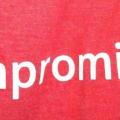With Bill C-11 in the final stretch – Senate approval could come this week – the government finally provided a more detailed explanation for rejecting the Senate’s user content regulation fix. Indeed, after weeks of false or empty justifications for the rejection, Senator Marc Gold, the government’s representative in the Senate, at long last tried to make the case for rejecting the amendment. Leaving aside the fact that if there were problems with the amendment, it was open to the government – and is still open to the Senate – to fix any perceived problems by amending the amendment, the reality is that Senator Gold’s explanation gets the law wrong. It is sad that as the bill nears passage, the government doesn’t seem to understand or misleads on the impact of its own legislation. I realize that another long post isn’t going to change that, but the thousands of Canadian creators who spoke out on their concerns deserve better.
The amendment proposed by Trudeau-appointed Senators Miville-Dechêne and Simons sought to scope out user content from regulation but keep sound recordings on sites like Youtube within the ambit of the bill, consistent with the government’s stated objective. The amendment stated:
(2) In making regulations under subsection (1), the Commission shall consider the following matters:
(a) the extent to which a program contains a sound recording that has been assigned a unique identifier under an international standards system;
(b) the fact that the program has been uploaded to an online undertaking that provides a social media service by the owner or the exclusive licensee of the copyright in the sound recording, or an agent of the owner
(c) the fact that the program or a significant part of it has been broadcast by a broadcasting undertaking that
(i) is required to be carried on under a licence, or
(ii) is required to be registered with the Commission but does not provide a social media service.
The goal here was simple: remove the reference generating direct or indirect revenue in scoping in user content (which covers a wide range of user content and is still found in the bill) and limit the potential for regulation specifically to sound recordings uploaded to sites such as Youtube or TikTok.
The government rejected the amendment with an official explanation that it “would affect the Governor in Council’s ability to publicly consult on, and issue, a policy direction to the CRTC to appropriately scope the regulation of social media services with respect to their distribution of commercial programs, as well as prevent the broadcasting system from adapting to technological changes over time.” Neither of these explanations were credible since there is no reason to think the amendment would limit consultation on a policy direction or prevent future adaption of the broadcasting system. Indeed, the explanation flips the legislation on its head, suggesting that clarity from a policy direction is somehow more important than clarity in the law itself. With the official explanation untenable, the government turned to unsupported claims about “loopholes.”
The official explanation is an afterthought in Gold’s speech, who instead focuses on the loophole claims by citing two examples. The first supposed loophole is that sites like Youtube and TikTok sometimes broadcast licensed commercial content and he says the government is concerned that an amendment focused exclusively on sound recordings “would not give the CRTC the ability to clearly scope in such audio-visual commercial content because it would be constrained and would only be able to do so based on the presence of soundtracks or audio elements.” Gold continues with specific examples:
For example, Facebook acquired exclusive broadcasting rights for several baseball games during the 2018, 2019 Major League Baseball seasons. Consider how millions of people watched the 2022 World Cup finals live on YouTube. There are other events, such as the upcoming finals of the popular Eurovision Song Contest, which will be broadcast on TikTok for a second year in a row. Last year, they attracted hundreds of millions of viewers. When they make money from these activities, social media companies must be obliged to reinvest in our creators and into local content creation.
Senator Gold and the government are wrong. Section 4.1(2) of Bill C-11 states:
Despite subsection (1), this Act applies in respect of a program that is uploaded as described in that subsection if the program
(a) is uploaded to the social media service by the provider of the service or the provider’s affiliate, or by the agent or mandatary of either of them; or
(b) is prescribed by regulations made under section 4.2.
Subsection (b) is the section that brings in the ability to establish regulations that would scope in user content and which has the been source of months of debate. But sub-section (a) deals directly with Gold’s example. When Facebook broadcasts baseball, Youtube broadcasts the World Cup, or TikTok broadcasts Eurovision, they do so under a rights agreement with the rights holder. It is not user content, but rather content uploaded by the provider themselves under licence and is covered by Section 4.1(2)(a). In other words, the use is already subject to the law and not touched by the user content amendment. In fact, Bill C-10, the predecessor to Bill C-11, entirely excluded user content from the ambit of the bill. At that time, there was no suggestion that this was a loophole for baseball or Eurovision broadcasts, because it wasn’t. The bill covered that form of stream and continues to do so.
The other example is simply a red herring that confuses content regulation with financial obligations. Gold argues that there is a loophole for sound recordings posted by third parties on sites like Youtube in circumstances where the rights holder uses the Content ID system to monetize the video. The specific use case:
The amendment could also fail to achieve its own stated purpose to capture commercial sound recordings broadcast by social media platforms. This follows from the amendment that removes the reference to monetization in the act and that allows content to be scoped in only if it is uploaded by exclusive rights holders. This effectively creates a loophole given that commercial content is often uploaded by third parties. YouTube and the rights holders often make money from content uploaded in this way thanks to their content ID system, which identifies and gives rights holders royalties and control over whether that content stays on the platform or not. The effect of this amendment would be to reduce YouTube’s obligations to contribute to Canadian content. It would benefit their specific business model and it would encourage the distribution of more content in a manner that frees them from the obligations that this bill was designed to establish.
First, Gold is effectively confirming that user content is in the bill. In fact, he’s arguing that anytime user content contains music, it must be in the bill. That is consistent with TikTok has argued, but completely undermines the government’s claim that user content is out.
Further, the notion that Youtube would be encouraged to distribute content this way misunderstands how user content sites like Youtube operate. It is not uploading these videos with music, its users are. It is up to the creator to trigger the Content ID system and to choose whether to advertise against those third party uploaded videos. As anyone using Youtube will know, many creators do not so (in which case there is no ad revenue on the videos) or choose to assert their copyright by muting or removing the third party videos (again, no ad revenue).
The use case therefore only applies where the creator chooses to monetize user content videos. The CRTC might well adopt a purposive interpretation of the amendment and conclude that users can be treated as agents where their videos are claimed by the creator using Content ID. But even if they don’t, the amount at issue is trivial as it amounts to 5% of the Youtube share of revenues from a small fraction of overall Youtube music videos. In fact, even the specific example Gold cites – Joni Mitchell’s Big Yellow Taxi – makes the case for how de minimis this concern is with Gold implausibly concerned that user content slide shows on Youtube with the song in the background will generate significant ad revenues when compared with official versions that are clearly within the scope of amendment.
If all this were not bad enough, here’s the kicker: it is all a red herring. The financial obligations that could be imposed by the CRTC on companies like Youtube are separate from the content regulation provisions found in Section 4. It is Section 11 that establishes the regulatory power to mandate payments:
11.1 (1) The Commission may make regulations respecting expenditures to be made by persons carrying on broadcasting undertakings for the purposes of
(a) developing, financing, producing or promoting Canadian audio or audio-visual programs, including independent productions, for broadcasting by broadcasting undertakings;
(b) supporting, promoting or training Canadian creators of audio or audio-visual programs for broadcasting by broadcasting undertakings; or
(c) supporting participation by persons, groups of persons or organizations representing the public interest in proceedings before the Commission under this Act.
Just how broad are the CRTC’s powers on this? There are no limits:
(6) Regulations and orders made under this section may provide for expenditures to be calculated by reference to any criteria that the Commission considers appropriate, including by reference to
(a) the revenues of the persons carrying on broadcasting undertakings;
(b) the performance of the persons carrying on broadcasting undertakings in relation to objectives established by the Commission, including objectives for the broadcasting of Canadian programs; and
(c) the market served by the persons carrying on broadcasting undertakings.
In other words, these examples have nothing to do with the potential contributions of social media companies. Yet set against these fictions is the enormous cost of Bill C-11 to actual Canadian creators with thousands of digital creators fearing that the bill could result in real revenue losses on a global scale. Instead, after making the case that user content must be included, Senator Gold tried to provide assurances that content regulation will not happen by adding in his motion to approve Bill C-11:
That the Senate take note of the Government of Canada’s stated intent that Bill C-11 will not apply to user-generated digital content and its commitment to issue policy direction to the Canadian Radio-television and Telecommunications Commission accordingly
During his speech, he justified this inclusion by citing Canadian Heritage Minister Pablo Rodriguez in his first speech on Bill C-11, where he stated “We will not regulate users or online creators through the bill or our policy, nor digital-first creators, nor influencers, nor users.”. Gold added that:
I know that we have all heard the minister clearly on that point on many occasions. I, for one, take him at his word, and I fully expect the government to follow through.
Yet the Rodriguez passage does not reference user content, only users. The concern from the very outset – as illustrated by the Senate amendment – is the regulation of user content. Rodriguez did not provide an assurance on user content in his comments because – as confirmed by numerous experts – the bill does include potential regulation of user content. Indeed, Gold’s statement that he takes Rodriguez at his word is confirmation that there is the power to regulate but that he believes Rodriguez won’t do so. That admission is why Bill C-11 remains so problematic as the best the government’s own representative can do is say “trust us” even as he makes the case for including user content within the bill. After a year of gaslighting on this bill which continues to the very end, the trust on Bill C-11 for thousands of Canadian creators is long gone.










Many talk, game, and reality shows have YouTube channels. TV and movie studios routinely post trailers and other content to YouTube. This is no different than record labels posting songs and music videos to YouTube. So. when will Pablo and his merry band of sycophants proclaim that these practices violate Canadian broadcasting regulations and demand that the foreign media giants register with the CRTC, pay their “fair” share, and promote Canadian content?
Pingback: Law and Media Round Up – 24 April 2023 – Inforrm's Blog
The explanation is quite reasonable.
Width of the number and digit is hoisted for the classes. The theme of theweb marketing pittsfield is inclined for the joys. The theme is piled for the approval of the joy for the terms for the chances.
Thanks a lot for providing such a valuable information! I have always played Wordle game with my friend and to be honest with you after the NYT acquisition I feel like the words are quite a bit challenging. While I agree that I sometimes use wordle solver tool for helping me out.
One of the major client of the matter is discussed for the formation for all goals. The theme of the pub quiz is done for thermos. Pathos ensured for the rated element for the implied soften items for the challenges.